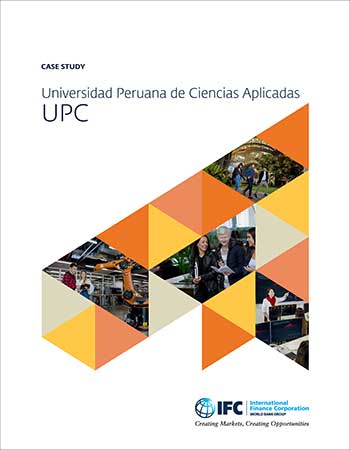In its quarter century history, the Peruvian University of Applied Sciences (Universidad Peruana de Ciencias Aplicadas, or UPC) has shown that when institutions of higher education follow a path of continuous improvement and innovation, they can sustain their own growth and help support economic prosperity around them. UPC is a private comprehensive university located in Lima, Peru with an expanding base of research activity. It has consistently placed among the top five Peruvian universities in the annual ranking by América Economía, a Latin American publication that evaluates institutions of higher education. The declared mission of the university is “to train upright and innovative leaders with a global vision to transform Peru,” a goal that places it in the forefront of technological and social change.
UPC has also earned a reputation for innovation. In the classroom, it practices “student-centered learning” as one of the core pedagogical principles of its educational model, which combines lectures and project-based experiences with feedback and reflection. Outside the classroom, with a special emphasis on digital infrastructure, the university has become a well-known innovator in higher education. Recently, UPC has been an early participant in the IFC's Digital for Tertiary Education Program (D4TEP). In this innovative program, universities evaluate and rethink their digital systems and organizational infrastructure, with the goal of improving their digital proficiency to provide better operational support, student experience, and learning outcomes.
UPC’s approach to digital innovation became particularly valuable during the pandemic. The university already had experience with remote learning. In 2020-21, it put that to use on behalf of its students and advised other Peruvian universities on how to do the same. Today, UPC is working on a postpandemic model that will allow students to choose their own mix of in-person and remote courses.
UPC started in 1994 with a single campus and an initial undergraduate curriculum focused on architecture, communications, engineering, and business. It has grown to four campuses in and around Lima, with more than 60,000 students and 52 undergraduate majors. Students seek degrees that will qualify them for careers in business, communications, medicine, engineering, architecture, media, law, health sciences, veterinary sciences, and other professional fields.
UPC has a diverse student body. About 35 percent of the students come from lower-income backgrounds, and a large proportion of the others come from Peru’s steadily growing middle class. An estimated 30–40 percent of UPC students are the first in their families to attend university.
The university is known not just for its academic reputation but for its high level of digital maturity and its profitable and sustainable business model. This has been fostered through a clear strategy and the continuous support of Laureate International Universities, which acquired UPC in 2004, and through UPC’s ongoing financing relationship with the International Finance Corporation (IFC), which has now partnered with the university through two financing rounds in 2000 and 2012.
This case study shows how a private university can become a learning organization itself, while raising the level of skill and opportunity for the local population.
Timeline
Lessons


